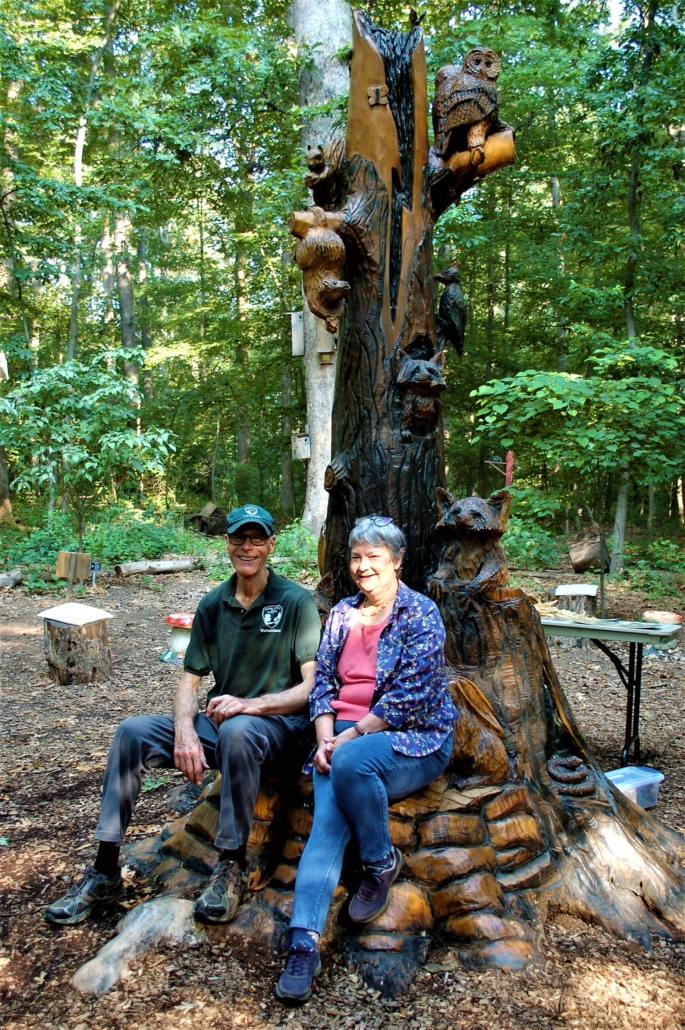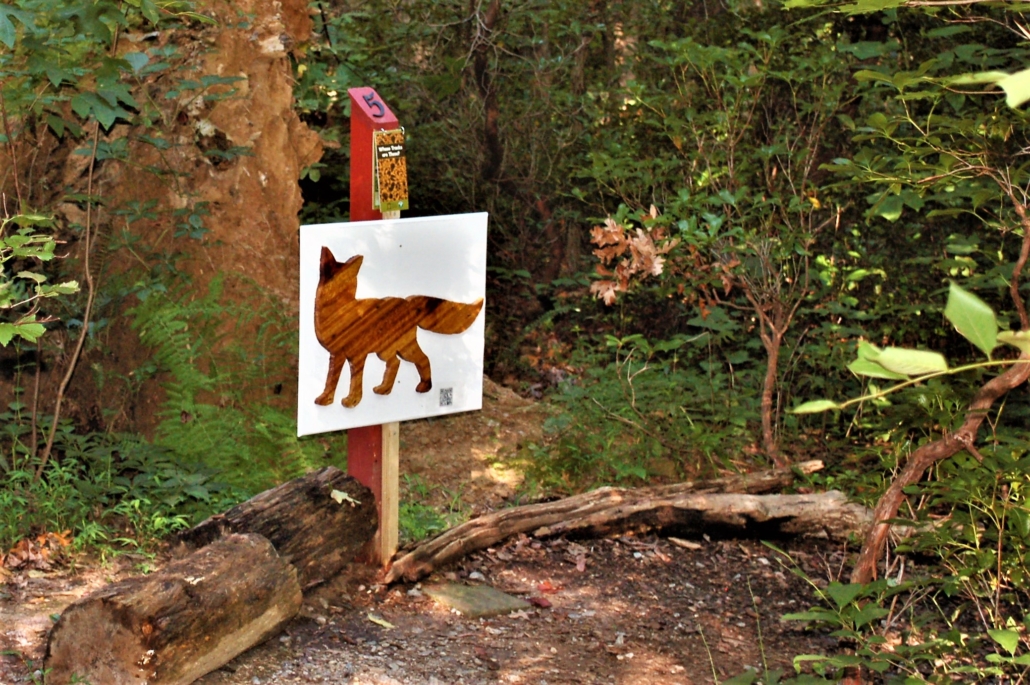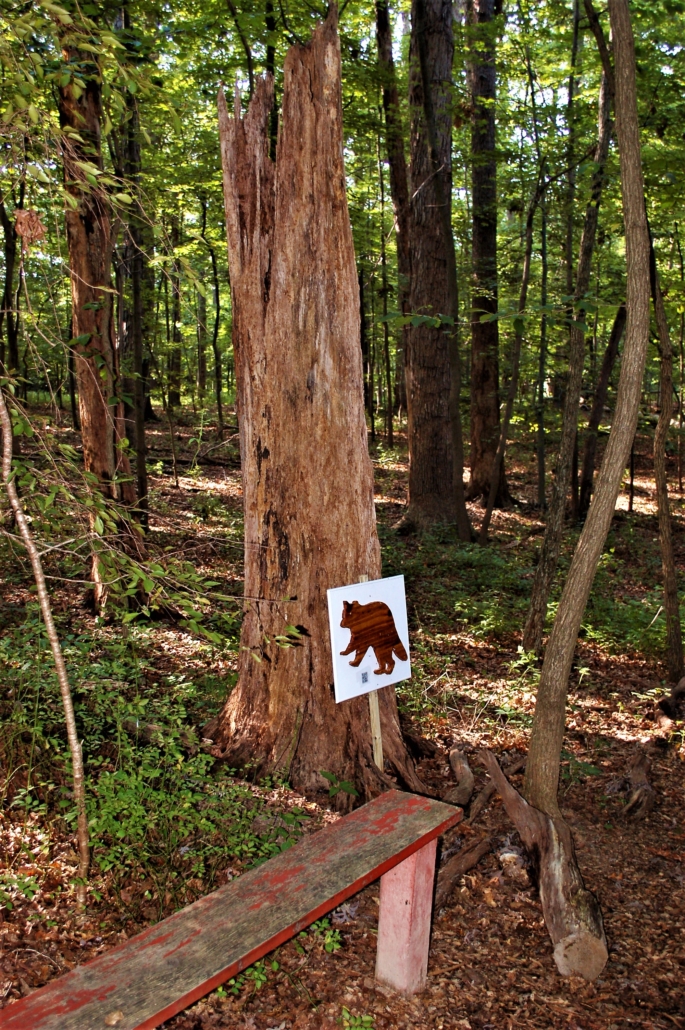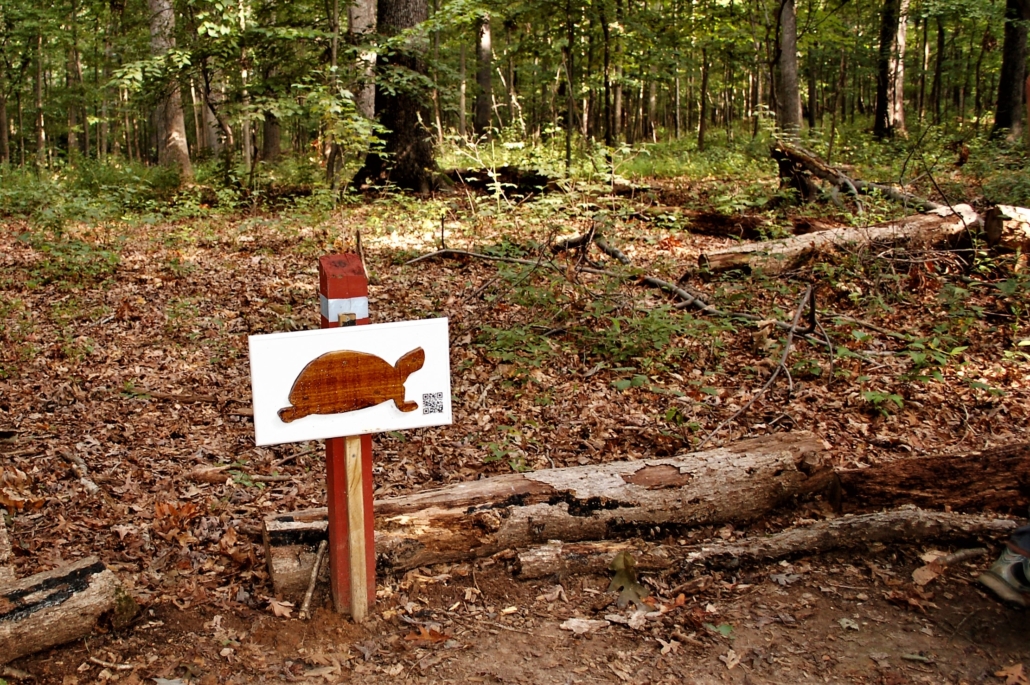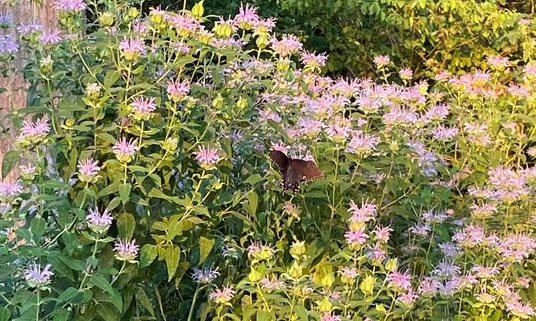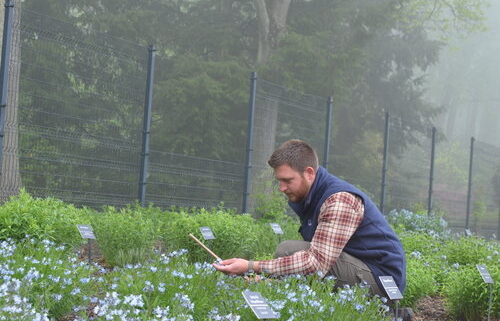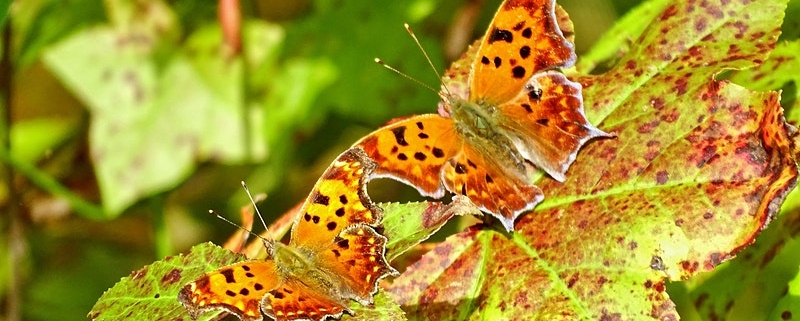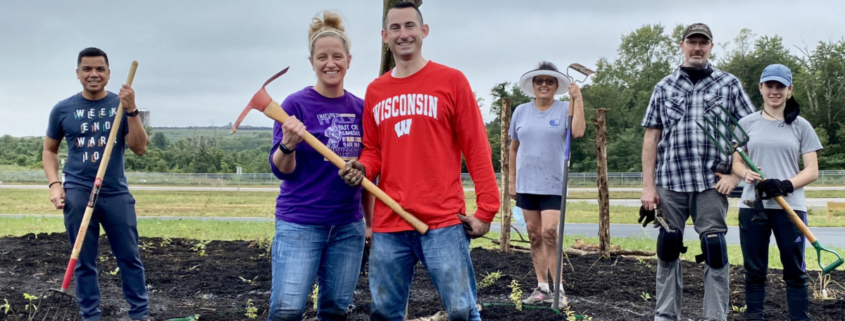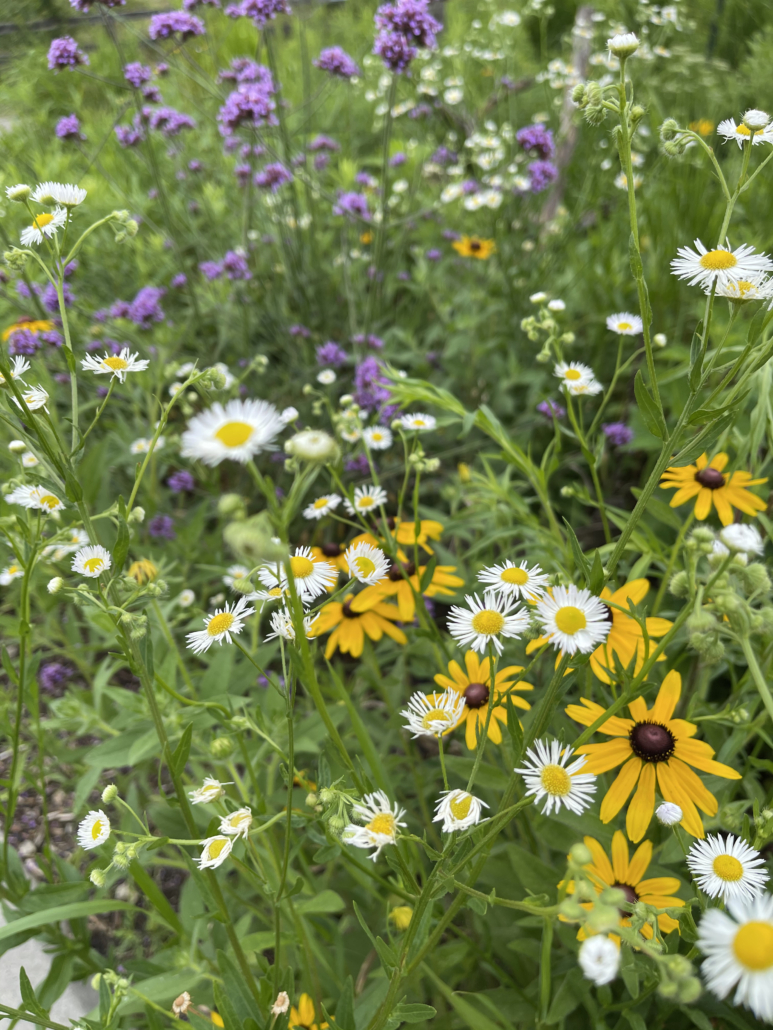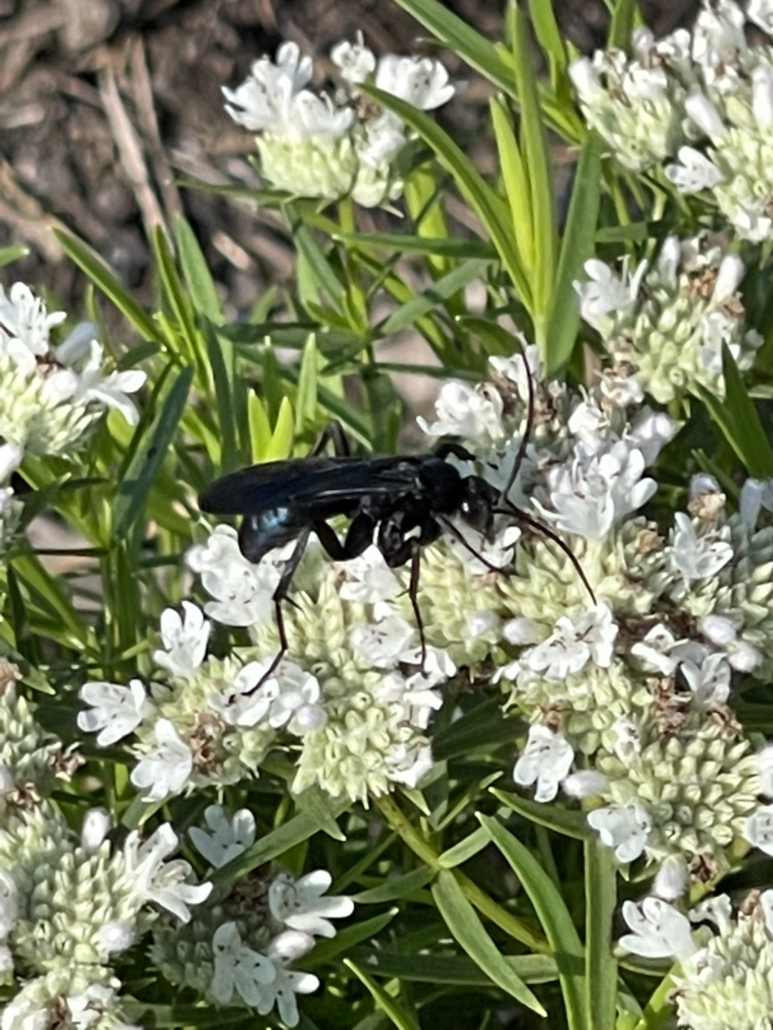Photos by Celia Boertlein
By Celia Boertlein and Mary Ann Bush
FMN Celia Boertlein has a beautiful story. It involves some new neighbors of the four-legged variety. Celia says, “This past winter, the foxes had moved their den over to the neighborhood pool which is adjacent to my yard. They were in and out of my yard from March through May. This past year, I was never really sure how many there were.” This was not Celia’s first encounter with the fox family neighbors. She goes on to say, “They actually had dens under my shed and screened porch during the previous two years. Spring of 2019 they had 4 pups, Spring of 2020 there were 5.”
According to the Rutgers University Cooperative Extension Fact Sheet FS1325, the fox breeding season in temperate regions occurs during January and February. A litter size may correlate with the availability of food resources. Most litters consist of 3 to 7 kits, which are born in early to mid-Spring. In the early weeks after the kits are born, the female fox also known as the vixen stays in the den to nurse and care for the kits while the male fox procures food for his mate and offspring. The kits depend on their mother’s milk till they are about 8-10 weeks old. At three weeks old the kits start to walk and start to emerge from the den with their mother.
Celia goes on to talk about a particular fox behavior that is both curious and fascinating. The foxes have acquired quite a stash of some interesting items. She states, “Their stash has included tennis balls, hockey pucks, dog pull toys, frisbees, single flip flops and tennis shoes, and a LOT of Washington Post newspapers in their plastic bags. On one day, I collected 4 newspapers in my backyard. Never did figure out all the neighbors involved. Funniest part was my newspaper was always left alone in my driveway.”
Why would a fox procure such objects? Celia is watching a growing family with apparently healthy, active kits. There is some speculation that the kits, like puppies, need something to chew on as their teeth come in. The parents could be choosing items because of the smell, or they prefer squishy objects with a leather-like texture for chewing. Another theory was more basic, a toy is a toy whether the youngster is a child, a puppy, or a baby fox.
Celia tried to contact her neighbors about the items, “Many of the dog toys were not retrieved by their dogs’ owners after they found out that foxes had stolen them. The hockey pucks and frisbees went back to their amused neighbors. Most people were amused and didn’t want their items back when they found out foxes had gnawed on them. The only upset people were my next-door neighbor who expected their newspaper in the driveway at 5:30 a.m. and the WP delivery person who got several irate phone calls that their papers were missing. The only downside to having a fox den in my yard was finding squirrel and other decaying animal parts left behind. “
The fox family season is drawing to a close. One final observation from Celia, “The foxes had moved out of my yard by late April, but we have adults and what I think of as the juveniles out and about year round. Early morning and late evening I see them a lot.”
Celia says she has been sharing this wonderful experience with her grandson, “My 3-year-old grandson FaceTimed me to see them. We now exchange wildlife photos on a regular basis.”
One last note: Celia is enjoying the exciting experience of watching the foxes grow up naturally and taking photographs from a distance. This is the most positive way to interact with wildlife. Foxes are naturally fearful and skittish around humans. We should never feed or habituate any wild animal to human contact. We don’t want to take away the most important skill these beautiful creatures can possess: their ability to survive in the wild on their own!


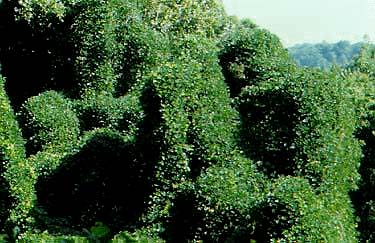
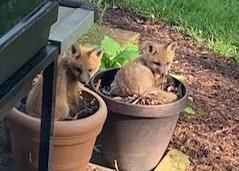
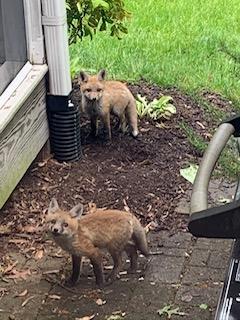
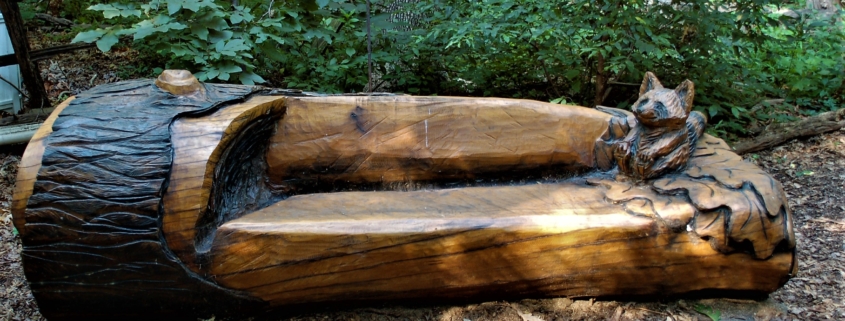 Jerry Nissley
Jerry Nissley 